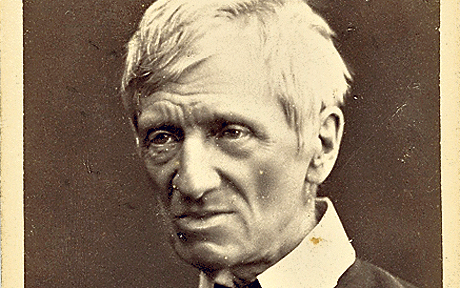Drinking to conscience first and then to the Pope
Sacred Mysteries: What would John Henry Newman have made of the Second Vatican Council? Ian Ker has an idea that he knows the answer
December 13, 2014
The Pope might order a Catholic to murder Queen Victoria, claimed Gladstone in a pamphlet he published in 1874, and the Catholic would have to – for the Pope was infallible. The notion was laughable, but Gladstone knew some people would take it seriously.
His pamphlet provoked John Henry Newman to write his celebrated Letter to the Duke of Norfolk – running to 150 pages in print. At the end comes the famous toast: “To the Pope, if you please, – still, to Conscience first, and to the Pope afterwards.”
What Newman (pictured in the 1860s) meant by conscience is analysed in a fascinating book (no longer than Newman’s Letter) by Ian Ker, his biographer. He has an unrivalled understanding of this hero of literary style and humane religion. Called Newman on Vatican II, it experiments in applying the principles of Newman (who lived through the First Vatican Council) to the 1960s Second Vatican Council.
Newman was respectfully cautious of Church councils, which generally had “two characteristics – a great deal of violence and intrigue on the part of the actors in them, and a great resistance to their definitions on the part of portions of Christendom”.
After the First Vatican Council declared that the Pope could on occasion be infallible in his teaching, Newman wanted to explain that conscience “cannot come into direct collision with the Church’s or the Pope’s infallibility, which is engaged on general propositions and in the condemnation of particular and given errors”. A collision might occur “only when the Pope legislates, or gives particular orders and the like. But a Pope is not infallible in his laws, nor in his commands”.
Newman, as Ker points out, realised that conscience can be “easily puzzled, obscured, perverted”. Nor is it “a judgment on any speculative truth, any abstract doctrine, but bears immediately on conduct, on something to be done or not done”. This certainly dispels the anxieties that Gladstone stirred up. Yet, Ker argues, it also has consequences, for our generation, living after Vatican II. “The frequently voiced claim,” Ker writes, “that Newman allowed for conscientious dissent from Church teachings is incorrect.” Drinking first to conscience referred to a response to papal orders. In questions of faith, Ker insists, “a believing member of the Church has a conscientious duty to believe the teachings of the Church, not to pick and choose what to believe”. If someone doesn’t believe, of course, he might decide to leave the Church. In his Grammar of Assent (1870), Newman defended propositions or articles of faith as “necessary to the mind in the same way that language is ever necessary for denoting facts”. Yet “the object of faith is not simply certain articles,” he wrote in a letter, “but the whole word of God, explicit and implicit, as dispensed by his living Church”. As for morals, “the idea that a Catholic may conscientiously dissent from the magisterium’s moral teachings would have amazed Newman. The possibility never occurred to him.” The question remains of how a moral principle applies here and now to a choice of action, and in this the conscience has its role. A sentence or two of Ker’s clouds things here, I think. He writes as though absolute negative teachings such as “Thou shalt not steal” have exceptions. He instances a penniless starving peasant taking food, which, as the Catechism of the Catholic Church reaffirms, is not theft. But the Commandment’s word “steal” is a moral absolute. It doesn’t say “thou shalt not take”. If the taking is not theft, it is not stealing. Stealing is always wrong. Some believers may be troubled by Ker’s diagnosis of Vatican II’s unintended consequence of dissent from Church doctrine. But it reads less neuralgically taken with his vision, elsewhere in this tightly written book, of the Church freed by Vatican II from polarisation between clergy and laity. It’s no longer them and us.
Telegraph Columnists: daily opinion, editorials and columns from our star writers
(127)














